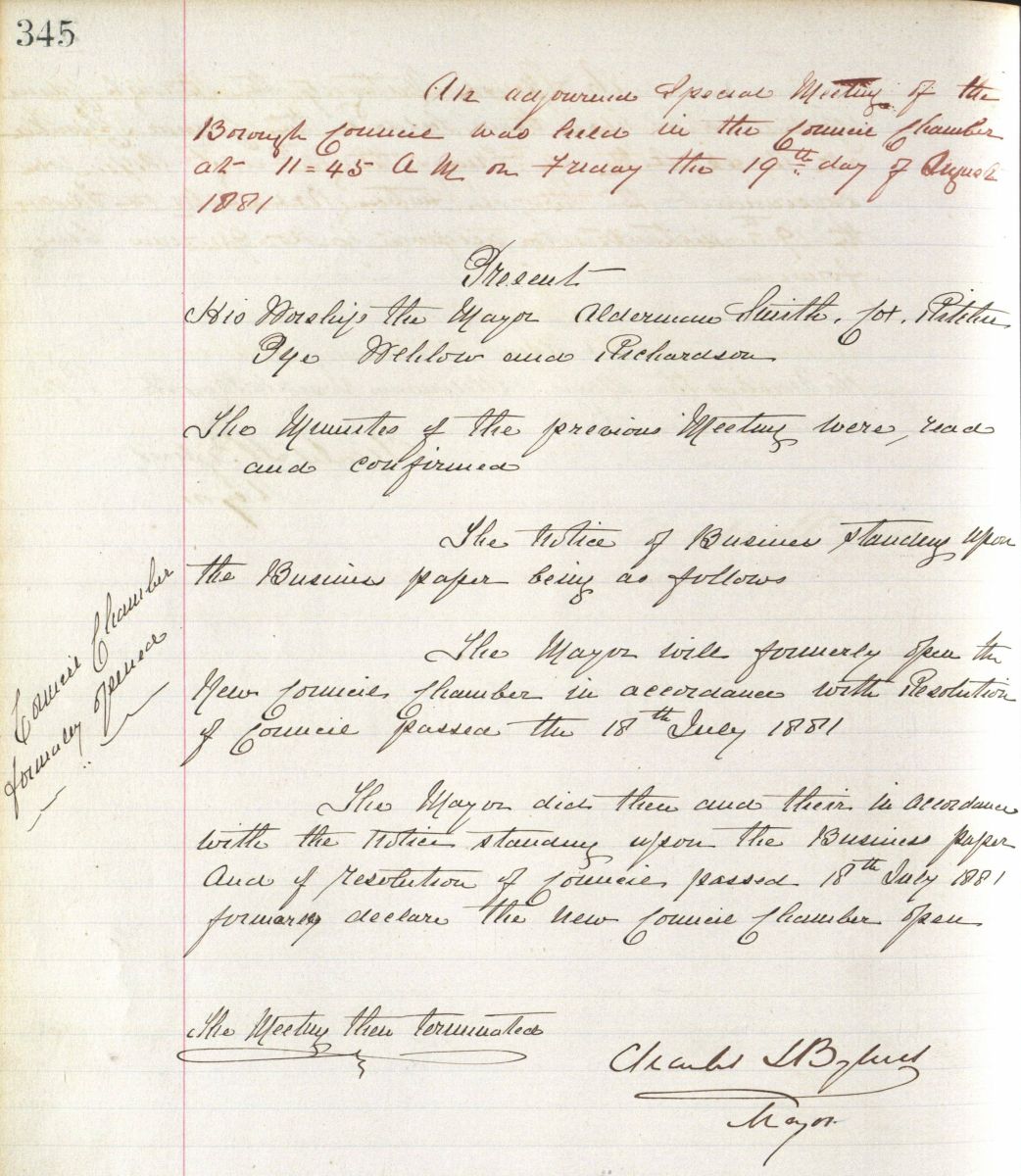The Charles Byrnes Room has been standing since 1881, but it hasn't always been known by this name.
The Charles Byrnes Room is significant as Parramatta Council's first purpose built council chamber. Prior to the construction of the Council Chambers building in 1881, the Council had used the Old Court House, Elder House, and rented premises on Church Street for council and committee meetings. The room functioned as the Council Chamber between 1881 and 1949.
Charles Byrnes was known as Parramatta's "perpetual mayor" and laid the foundation stone for the Council Chambers building in 1879. A complimentary banquet was given in his honour to celebrate the opening on the 19th November 1881.

City of Parramatta Heritage Archives: PRS21/004.
Charles Byrnes passed away in 1917. At the time of his passing, his son Charles Ernest Byrnes wrote to the Council and offered several of his father's valued personal belongings as "mementos of official municipal life in this town." This included the trowel used to lay the foundation stone of the Council Chambers building.

City of Parramatta Heritage Archives: PRS30/009.
The trowel is now held within the City of Parramatta's Cultural Collections:

City of Parramatta Cultural Collections: 2002.228
In 1948 the Council's of Parramatta, Granville, Dundas and Ermington-Rydalmere amalgamated. After the amalgamation, council and committee meetings were instead conducted at Granville Town Hall from 1949, up until the opening of the Administrative Building in 1958. The Old Council Chamber was then used as office space by the Council until the 1990's.
In 2000, restoration works were undertaken at Parramatta Town Hall. This included the discovery of the original hand-painted ceiling from 1881 in the Council Chamber that can be seen in the room today. It is possible that the false ceiling may have been installed during 1932 renovations.

City of Parramatta Heritage Archives: PRS118.
In August 2000, Parramatta City Council resolved to name the newly restored Council Chamber the Charles Byrnes Room. The room was named after Charles Byrnes as the mayor of the day, and to recognise his long involvement in local politics, civic administration, and business.

City of Parramatta Cultural Collections: 2012.019.01
![]()
Paige Davis, Heritage Archivist, 2023.
Select Bibliography
City of Parramatta Heritage Archives: PRS21/004 & PRS21/57.


